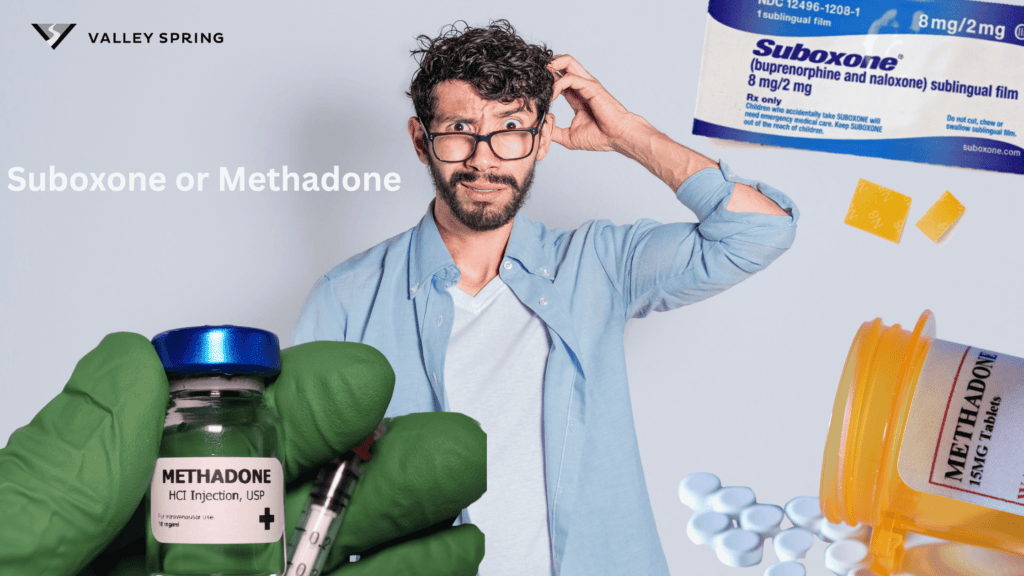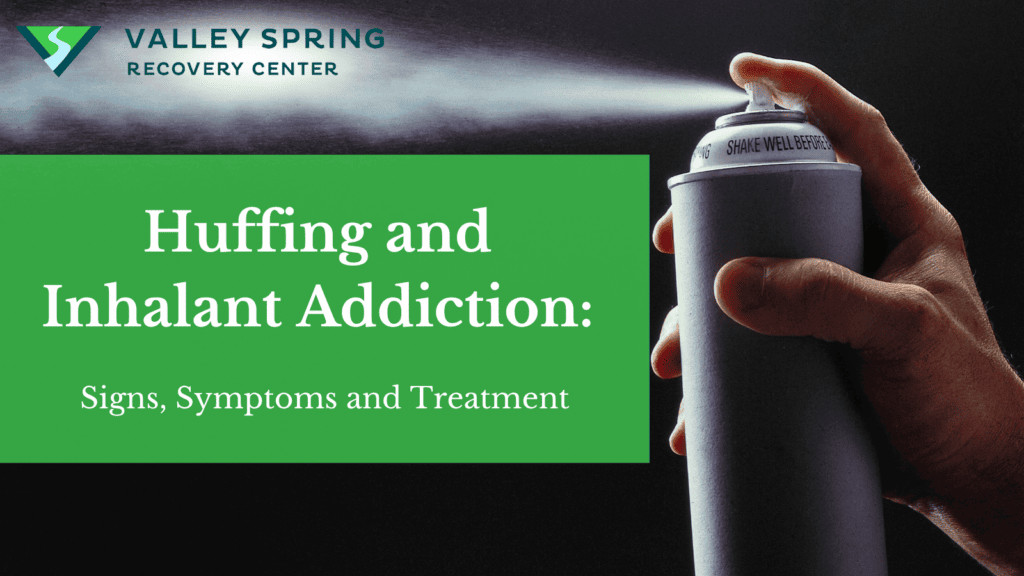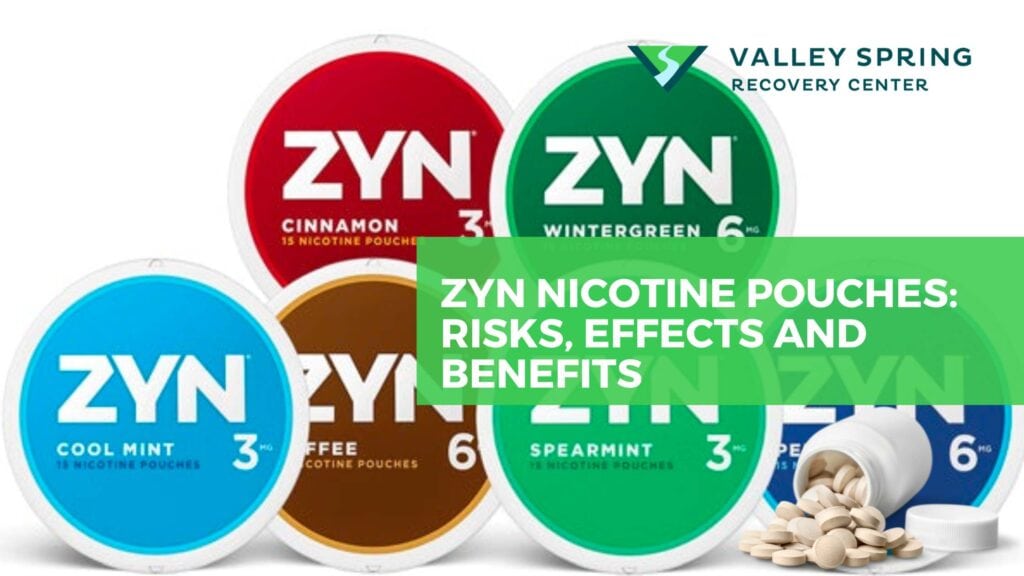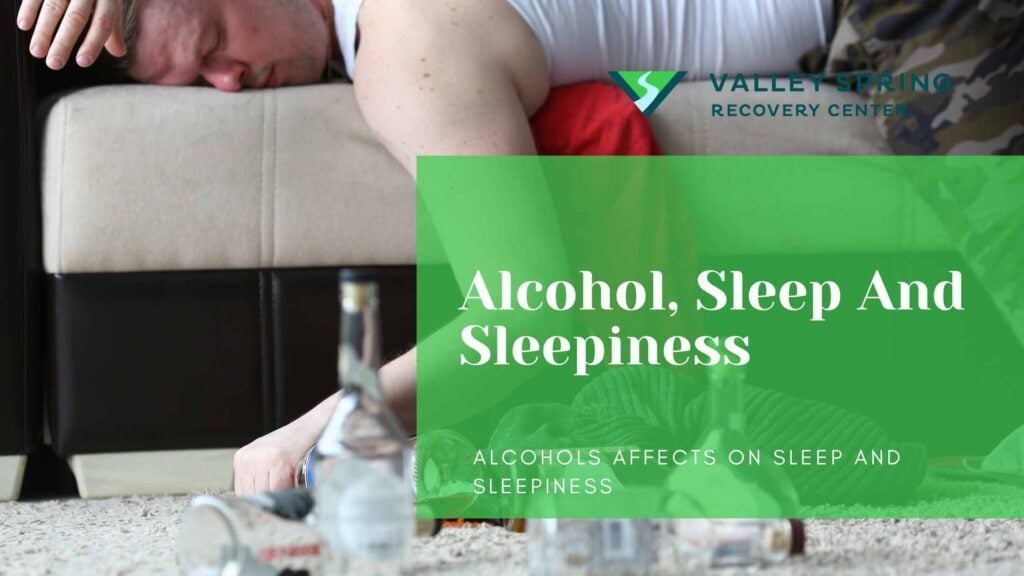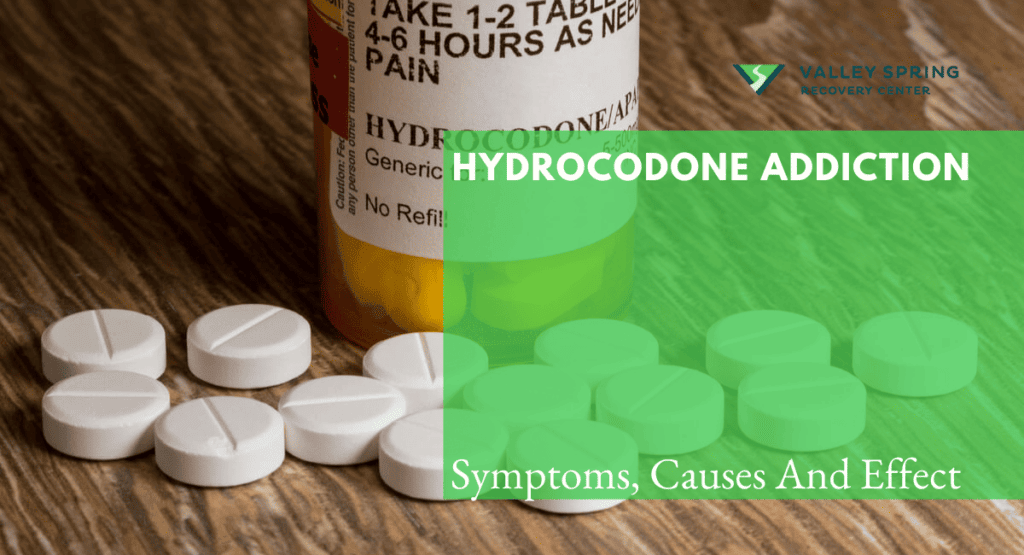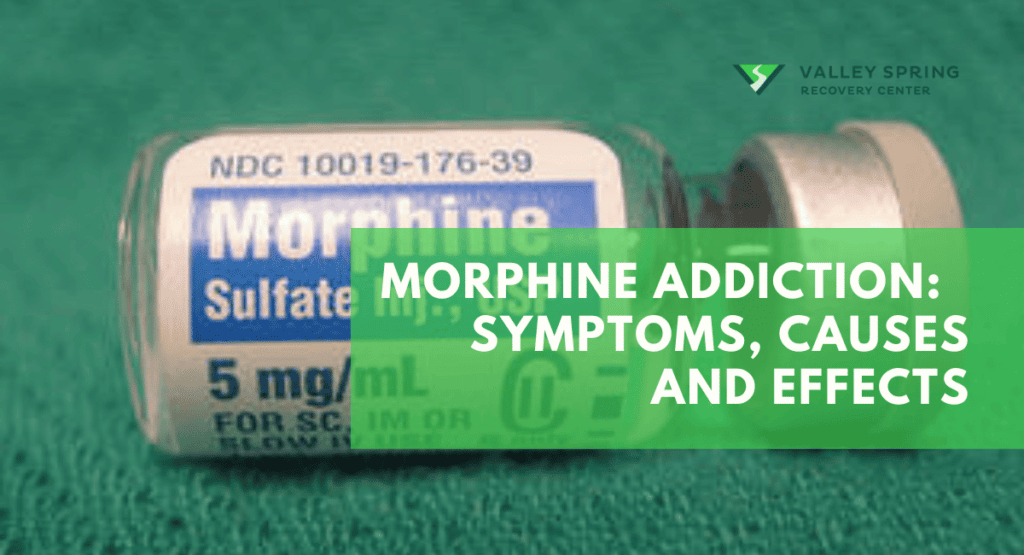Living with opioid addiction is a challenging and often overwhelming reality for millions of people worldwide. Choosing the right medication to support recovery is a critical decision that can greatly impact an individual’s journey toward a healthier life. A common question that arises is, “is Suboxone the same as Methadone?” Suboxone and Methadone, two prominent medications used in treating opioid addiction, are often compared due to their similarities and differences. But how do these medications work, and which one is the right choice for a specific individual? In this blog post, we will explore the key differences between Suboxone and Methadone, their advantages and disadvantages, and provide guidance on choosing the right treatment option based on individual circumstances.
Key Takeaways
Suboxone and Methadone are effective treatments for opioid addiction but differ in terms of effectiveness, side effects, hazards and availability.
Consultation with healthcare professionals is essential to select the most suitable treatment option based on severity of addiction and patient preferences.
Medication assisted treatment with Suboxone or Methadone can provide relief from withdrawal symptoms while reducing cravings.
What Is Methadone?
Methadone is a synthetic opioid, designed as an opioid agonist medication to subdue withdrawal symptoms and cravings in individuals battling opioid addiction. For decades, it’s been an effective treatment tool, primarily used to ease withdrawal symptoms and cravings.
Methadone treatment has shown notable success in moving individuals away from illicit opioids while also lessening cravings and withdrawal symptoms.
What Is Methadone Composition and Action?
Methadone contains methadone hydrochloride as its active ingredient, which is a full opioid agonist, and various inactive ingredients depending on the formulation. Its mechanism of action involves activating opioid receptors, thereby mitigating withdrawal symptoms and decreasing the probability of overdose from other opioids.
Stimulating opioid receptors as a partial agonist, Methadone provides relief from both opiate withdrawal and opioid withdrawal symptoms, minimizing the risk of overdose and making it a vital tool in addiction medicine.
What Is Suboxone?
Suboxone is comprised of two components, buprenorphine and naloxone, Suboxone is a medication used for treating opioid dependence. Buprenorphine is the first medication to treat opioid use disorder (OUD) that can be prescribed or dispensed in physician offices, significantly increasing access to care for individuals struggling with opiate addiction. Being a partial opioid agonist, buprenorphine carries a lower potential for abuse and addiction than full opioid agonists such as methadone. It chiefly works to curb cravings and withdrawal symptoms associated with opioid addiction.
What Is Suboxone Composition and Action?
Suboxone functions by partially activating opioid receptors, providing relief from withdrawal symptoms while simultaneously inhibiting the effects of other opioids. The combination of naloxone with buprenorphine in Suboxone serves to discourage intravenous diversion and drug abuse.
Naloxone remains inactive when taken orally, as recommended. However, if Suboxone is dissolved and injected, it triggers withdrawal symptoms. Buprenorphine’s limited intrinsic activity at mu receptors renders it less potent than full mu agonists such as methadone, thus causing less analgesia and euphoria, but it effectively relieves withdrawal symptoms.
Which is safer Suboxone or methadone?
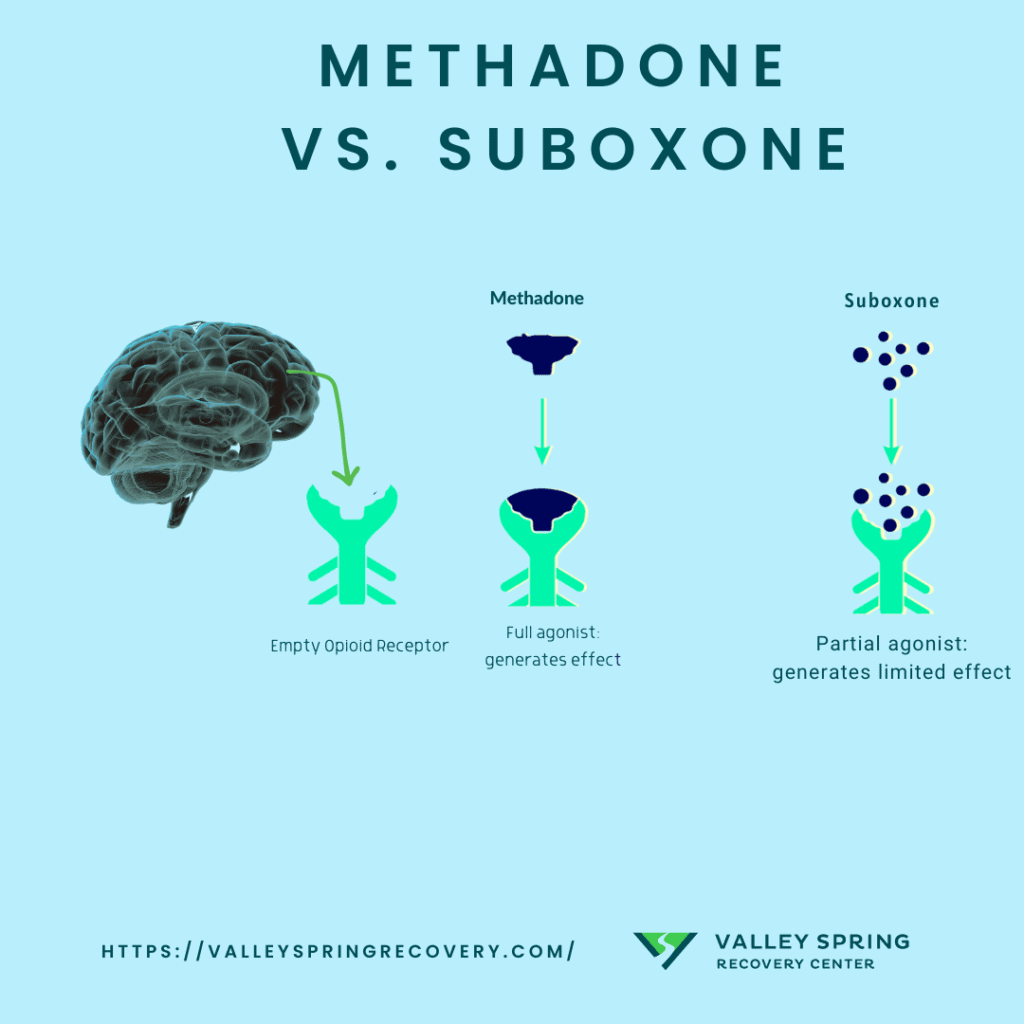
Suboxone exhibits a diminished propensity for eliciting dopaminergic surges, thereby exerting a minimal effect on the brain. Concurrently, the presence of naloxone mitigates the likelihood of experiencing euphoric sensations. Thus, Suboxone is predominantly regarded as a more secure and less habit-forming therapeutic option for opioid dependency than methadone. Suboxone overdose is also less common than methadone overdose. Unlike methadone, its effects taper off after a certain dosage amount (called the ceiling effect).
A 2020 Neuropsychopharmacology report suggests that buprenorphine is less likely to cause dopamine spikes compared to heroin, which could make it less addictive. The study found buprenorphine increases dopamine by up to 25% which is less than other opiates which can increase dopamine levels to 60% or more. Buprenorphine can block the effects of heroin on dopamine release. The researchers (Isaacs, Dominic P et al.) think the way buprenorphine works is complex and involves multiple interactions within the body, which might explain why it’s generally considered safer for treating opioid addiction. However, it’s important to note, that suboxone and methadone are both Central Nervous System (CNS) Depressants which makes them dangerous if mixed with other drugs such as alcohol or benzodiazepines. Buprenorphine is safer than methadone due to its partial agonist properties, having less risk of causing problems in heart rhythm and resulting in milder withdrawal when treatment is stopped.
What Is The Difference Between Suboxone and Methadone?
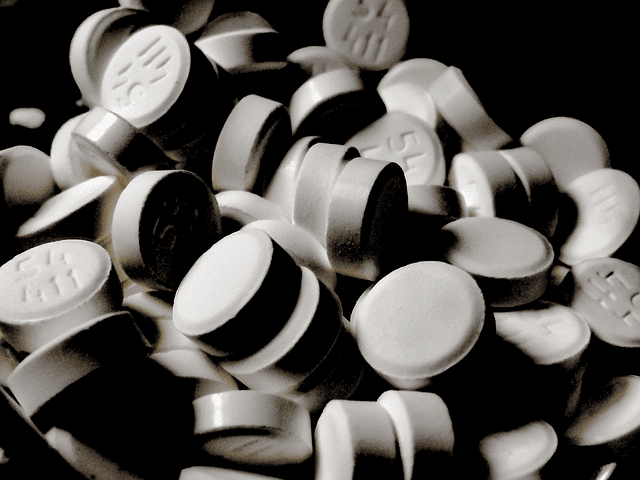
Suboxone is a partial agonist which means it does not fill up the opioid receptors whereas Methadone is a full agonist and completely fills the opioid receptors. This makes suboxone produce less euphoric effects in comparison to methadone and also has less severe withdrawal symptoms. Suboxone can also be prescribed directly from a doctor’s office rather than Methadone which has to be administered in a licensed methadone clinic making suboxone more widely accessible. Both have proven to be effective in treating opioid use disorder and the primary differences are displayed in their, side effects, hazards, and availability making the decision and selection of the appropriate medication dependent on the individual’s particular circumstances.
Potential side effects and risks associated with Suboxone and Methadone include:
Nausea
Headaches
Dizziness
Drowsiness
Constipation
Slowed breathing
Misuse and addiction
Efficacy in Treating Opioid Addiction
Both Suboxone and Methadone have been found effective in treating opioid addiction, but methadone may be more successful in retaining patients in treatment programs. Research has shown that individuals taking buprenorphine, including Suboxone, at an appropriate dose are nearly twice as likely to remain in treatment compared to those without opioid replacement therapy.
However, a study comparing methadone versus Suboxone revealed that methadone was more effective in terms of retention, with 74% of participants remaining in treatment compared to 46% of those taking Suboxone.
Side Effects and Risks
Suboxone and Methadone can have varying side effects and risks, with Methadone having a heightened risk of overdose in comparison to Suboxone. Suboxone may cause nausea, headaches, and dizziness, while Methadone may lead to drowsiness, constipation, and slowed breathing.
Methadone carries a significantly greater risk of methadone overdose than buprenorphine, which is an opioid overdose concern. This difference in risk should be taken into account when deciding which drug to use.
Accessibility and Cost
Suboxone is accessible by prescription and is generally covered by most insurance plans.
Methadone, however, is more cost-effective and accessible through specialized clinics, typically covered by insurance. The cost of both methadone and other medications may vary depending on the insurance plan.
What Are The Pros And Cons of Suboxone and Methadone For Addiction Treatment?

Suboxone methadone treatments, such as Methadone and Suboxone, both have their own benefits and drawbacks in treating opioid addiction. They have been proven to be effective treatments for opioid addiction, with a reduced risk of withdrawal symptoms, a lower potential for abuse and addiction, and are known for their accessibility and convenience.
Methadone, on the other hand, has been shown to be an effective long-term treatment for opioid addiction, is cost-effective, and is widely accessible.
Benefits of Suboxone
Suboxone is known to have a greater degree of safety and is less likely to lead to an overdose compared to Methadone. This increased safety profile is one of the main advantages of using Suboxone in treating opioid addiction.
Additionally, Suboxone carries a lower risk of withdrawal symptoms and potential for abuse than Methadone due to its partial opioid agonist properties.
Drawbacks of Suboxone
Although Suboxone has been proven to be effective in treating opioid addiction, it may be less effective in retaining patients in treatment programs compared to Methadone.
Additionally, the need for long-term use to manage opioid dependence may be necessary, and there is a potential for dental issues when the medication is dissolved in the mouth.
Benefits of Methadone
Methadone has a long-standing record of efficacy in the treatment of opioid addiction, making it a trusted and reliable option for many individuals seeking help with their addiction.
It has been used for decades to help people overcome their addiction and lead healthier lives. It is.
Drawbacks of Methadone
Methadone necessitates increased medical monitoring due to its propensity for misuse and the possibility of overdose. Additionally, Methadone may cause side effects such as constipation and respiratory depression, which can be problematic for some patients.
Choosing the Right Treatment: Suboxone or Methadone?
Choosing the right treatment depends on individual factors and consultation with healthcare professionals. Factors to consider include the severity of addiction, patient preferences, and potential side effects.
Consulting with healthcare professionals is crucial in determining the best treatment option based on individual needs.
Factors to Consider
When choosing between Suboxone and Methadone, it is important to consider factors such as the severity of addiction, patient preferences, and potential side effects. Healthcare providers can offer guidance on the most suitable treatment choice for the particular patient, taking into account their specific needs and circumstances.
Consultation with Healthcare Professionals
Choosing between Suboxone and Methadone requires consultation with healthcare professionals who can guide you to the most suitable treatment for your specific case. They can enlighten you about:
the effectiveness
side effects
risks
accessibility
Our team of experts will guide you through the benefits and drawbacks of each medication, helping you make an informed decision about how to treat opioid addiction, taking into consideration your specific opioid use disorder.
You should consider all potential options and evaluate the pros and cons of each.
Real-Life Experiences: Success Stories and Challenges

Real-life experiences of individuals using Suboxone or Methadone can provide valuable insight into the effectiveness and challenges of each treatment option. Stories of successful rehabilitation and the difficulties encountered during the journey can help others better understand the advantages and disadvantages of Suboxone and Methadone in treating opioid addiction.
These experiences can serve as a source of inspiration and motivation for those considering their treatment options and navigating the difficult path towards recovery.
How Effective Is MAT For Opioid Addiction?
Medication-assisted treatment (MAT) with Suboxone or Methadone has shown effectiveness in treating opioid addiction. However, each medication offers different benefits and drawbacks, depending on the individual’s circumstances.
By providing relief from withdrawal symptoms and reducing cravings, both Suboxone and Methadone can improve the quality of life for individuals struggling with opioid addiction and support their journey towards recovery.
Summary
In conclusion, both Suboxone and Methadone are effective medications for treating opioid addiction, each offering its own unique set of advantages and disadvantages. The choice between these two medication-assisted treatments depends on individual factors, such as the severity of addiction, patient preferences, and potential side effects. Consultation with healthcare professionals is crucial in determining the most appropriate treatment option for each individual. By understanding the differences between Suboxone and Methadone, individuals seeking recovery from opioid addiction can make more informed decisions and take the necessary steps toward a healthier, addiction-free life.
Frequently Asked Questions
What drug is closest to methadone?
Methadone and buprenorphine are both opioid agonist therapies used to treat addiction to opioid drugs such as heroin. Methadone is typically used to treat more severe cases of dependence while buprenorphine is usually better restricted to those with mild–moderate dependence.
Both treatments are equally effective when combined with medical and supportive care.
Is Suboxone or methadone better for chronic pain?
Given the potential for addiction and dependence with both drugs, it is important to use them carefully.
Methadone may be better suited to treat chronic pain than Suboxone, which is only approved to treat opioid dependence.
Does Suboxone work the same as methadone?
Suboxone and methadone are both opioid agonists, meaning they stimulate the same brain receptors as opioids, but there are differences in how they work and their risk profiles.
Suboxone contains the active ingredients buprenorphine and naloxone and binds to the brain’s opioid receptors, but does not fully stimulate them like methadone. Therefore, Suboxone may be less effective at managing cravings and withdrawal symptoms for severe cases of addiction compared to methadone.
What are the potential side effects of Suboxone and Methadone?
The potential side effects of Suboxone include nausea, headaches, and dizziness, while Methadone may cause drowsiness, constipation, and slowed breathing.
Sources
- Isaacs, Dominic P et al. “Buprenorphine is a weak dopamine releaser relative to heroin, but its pretreatment attenuates heroin-evoked dopamine release in rats.” Neuropsychopharmacology reports vol. 40,4 (2020): 355-364. doi:10.1002/npr2.12139 https://www.ncbi.nlm.nih.gov/pmc/articles/PMC7718284/
- Bell, J., & Zador, D. (2000). A risk-benefit analysis of methadone maintenance treatment. Drug safety, 22(3), 179–190. https://doi.org/10.2165/00002018-200022030-00002
- Bhatia, G., & Sarkar, S. (2020). Sublingual buprenorphine-naloxone precipitated withdrawal-A case report with review of literature and clinical considerations. Asian journal of psychiatry, 53, 102121. https://doi.org/10.1016/j.ajp.2020.102121
- Casadonte, P. (2013). Transfer from Methadone to Buprenorphine. Providers Clinical Support System. https://pcssnow.org/wp-content/uploads/2014/03/PCSS-MATGuidanceTransferMethadonetoBup.Casadonte.pdf
- Durrani M, Bansal K. Methadone. [Updated 2022 Jan 9]. In: StatPearls [Internet]. Treasure Island (FL): StatPearls Publishing; 2022 Jan-. Available from: https://www.ncbi.nlm.nih.gov/books/NBK562216/
- Grissinger M. Keeping patients safe from methadone overdoses. P T. 2011;36(8):462-466.
- Jaffe, J. H., & O’Keeffe, C. (2003). From morphine clinics to buprenorphine: regulating opioid agonist treatment of addiction in the United States. Drug and alcohol dependence, 70(2 Suppl), S3–S11. https://doi.org/10.1016/s0376-8716(03)00055-3
- Lintzeris, N., Monds, L. A., Rivas, C., Leung, S., Dunlop, A., Newcombe, D., Walters, C., Galea, S., White, N., Montebello, M., Demirkol, A., Swanson, N., & Ali, R. (2018). Transferring Patients From Methadone to Buprenorphine: The Feasibility and Evaluation of Practice Guidelines. Journal of addiction medicine, 12(3), 234–240. https://doi.org/10.1097/ADM.0000000000000396
- NIDA. 2021, April 13. How much does opioid treatment cost?. Retrieved from https://nida.nih.gov/publications/research-reports/medications-to-treat-opioid-addiction/how-much-does-opioid-treatment-cost on 2022, February 1
- NIDA. 2021, December 3. How effective are medications to treat opioid use disorder?. Retrieved from https://nida.nih.gov/publications/research-reports/medications-to-treat-opioid-addiction/efficacy-medications-opioid-use-disorder on 2022, February 1
- Salsitz, E. A., Holden, C. C., Tross, S., & Nugent, A. (2010). Transitioning stable methadone maintenance patients to buprenorphine maintenance. Journal of addiction medicine, 4(2), 88–92. https://doi.org/10.1097/ADM.0b013e3181add3f5
- Shulman, M., Wai, J. M., & Nunes, E. V. (2019). Buprenorphine Treatment for Opioid Use Disorder: An Overview. CNS drugs, 33(6), 567–580. https://doi.org/10.1007/s40263-019-00637-z
- (2022, January 1). Methadone (Oral Route). Mayo Clinic. https://www.mayoclinic.org/drugs-supplements/methadone-oral-route/side-effects/drg-20075806
- (2022, January 24). Buprenorphine. SAMHSA. https://www.samhsa.gov/medication-assisted-treatment/medications-counseling-related-conditions/buprenorphine
Ben Fisher
All author postsShare This Post

